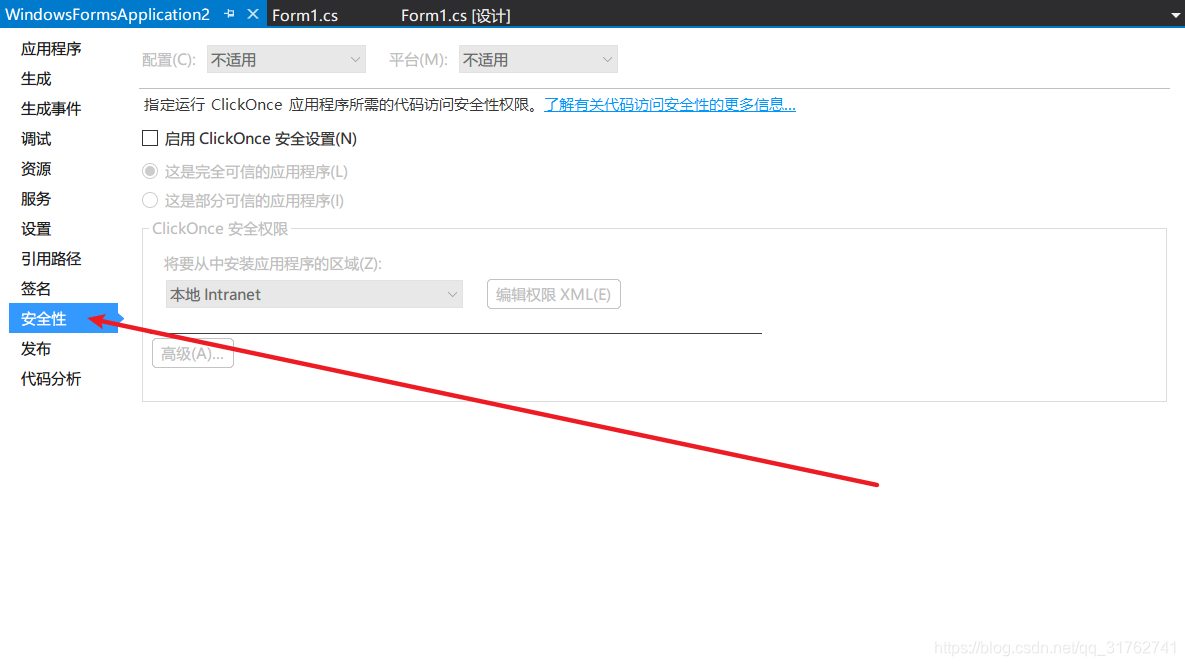C#如何以管理员身份运行程序
本文共 599 字,大约阅读时间需要 1 分钟。
在使用winform程序获取调用cmd命令提示符时,如果是win7以上的操作系统,会需要必须以管理员身份运行才会执行成功,否则无效果或提示错误。 比如在通过winform程序执行cmd命令时,某些情况下如果不是以管理员身份运行,则会提示命令无效。或者通过winform程序执行Windows Service 服务时,也需要以管理员身份才能调用Service服务。
下面讲解一下如何使程序获取管理员权限来运行。
- 在Visual Studio 中–解决方案资源管理器–右键项目名称–属性,找到“安全性”选项

- 勾选“启用ClickOnce安全设置”

- 这时,在项目下面会多出一个“app.manifest”的文件,选中它,并找到代码段
<requestedExecutionLevel level="asInvoker" uiAccess="false" />,将其改为:<requestedExecutionLevel level="requireAdministrator" uiAccess="false" />, 打开
打开 
- 改正后,不要急于重新编译生成,再次打开“属性–安全性”界面, 将“启用ClickOnce安全设置”前面的勾去掉后再编译运行。 不然程序会报错无法运行。

转载地址:http://onex.baihongyu.com/
你可能感兴趣的文章
Netty源码解读
查看>>
netty的HelloWorld演示
查看>>
Netty的Socket编程详解-搭建服务端与客户端并进行数据传输
查看>>
Netty的网络框架差点让我一夜秃头,哭了
查看>>
Netty相关
查看>>
Netty简介
查看>>
Netty线程模型理解
查看>>
netty解决tcp粘包和拆包问题
查看>>
Netty速成:基础+入门+中级+高级+源码架构+行业应用
查看>>
Netty遇到TCP发送缓冲区满了 写半包操作该如何处理
查看>>
netty(1):NIO 基础之三大组件和ByteBuffer
查看>>
Netty:ChannelPipeline和ChannelHandler为什么会鬼混在一起?
查看>>
Netty:原理架构解析
查看>>
Network Dissection:Quantifying Interpretability of Deep Visual Representations(深层视觉表征的量化解释)
查看>>
Network Sniffer and Connection Analyzer
查看>>
Network 灰鸽宝典【目录】
查看>>
Network-Emulator Network-Emulator-Toolkit网络模拟器使用
查看>>
Networkx写入Shape文件
查看>>
NetworkX系列教程(11)-graph和其他数据格式转换
查看>>
Networkx读取军械调查-ITN综合传输网络?/读取GML文件
查看>>